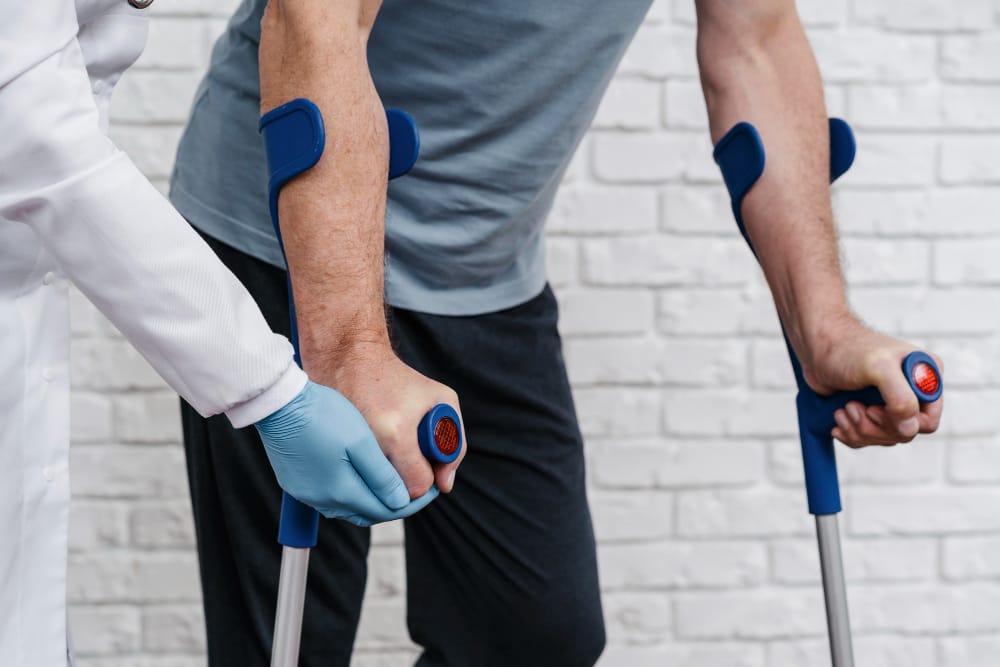In the hustle and bustle of the modern work environment, ensuring the safety and well-being of employees is of paramount importance. Unfortunately, accidents happen, and workers can sustain injuries while on the job. It’s crucial to identify the most common injuries at work in the UK, as understanding these risks can help prevent future incidents and create a safer working environment for all.
Understanding the Risks
Workplace injuries can occur in various industries, from construction sites to office spaces. While the nature of these injuries may differ, they all share a common thread: the potential to disrupt lives and livelihoods. Let’s delve into some of the most prevalent work-related injuries in the UK and explore the steps employers can take to mitigate these risks.
Slips, Trips, and Falls: A Hazardous Trio
Slips, trips, and falls are among the leading causes of workplace injuries across the UK. Whether it’s a wet floor, an uneven surface, or cluttered walkways, the risks are ever-present. These incidents can result in sprained ankles, broken bones, or even more severe consequences.
Employers can minimise these risks by maintaining clean and well-organised workspaces, promptly addressing any potential hazards, and providing adequate training to employees on maintaining a safe environment.
Manual Handling Injuries
Manual handling injuries are another prevalent concern in the workplace. Improper lifting techniques, overexertion, and inadequate training can lead to back strains, muscle sprains, and even long-term musculoskeletal disorders.
Employers should prioritise ergonomics, providing lifting aids when necessary, and offering comprehensive training programs on proper lifting techniques to reduce the risk of these injuries.
Repetitive Strain Injuries
The rise of technology and the prevalence of desk-bound jobs have contributed to the increasing occurrence of repetitive strain injuries (RSIs). These injuries, often affecting the wrists, hands, and arms, result from repetitive motions, such as typing or using a mouse for extended periods.
Employers can mitigate the risk of RSIs by ensuring ergonomic workstations, promoting regular breaks and stretching exercises, and raising awareness among employees about proper posture and ergonomics.
Machinery Accidents
In industrial settings, machinery accidents pose a significant risk to worker safety. From factory floors to construction sites, employees face hazards associated with operating heavy machinery and equipment. These accidents can lead to severe injuries, such as fractures, lacerations, or even amputations.
Employers must prioritise comprehensive training for employees operating machinery, ensure proper maintenance and inspection protocols, and provide personal protective equipment (PPE) to minimise the risk of accidents.
Workplace Violence
Regrettably, workplace violence remains a concern in certain industries. Employees may face verbal abuse, physical assaults, or even threats to their personal safety. These incidents can cause physical injuries as well as psychological trauma.
To address workplace violence, employers should establish clear policies and procedures, promote a culture of respect and zero tolerance for violence, and provide training on conflict resolution and personal safety.
Prioritising Workplace Safety for a Better Future
While it’s disheartening to acknowledge the prevalence of workplace injuries in the UK, it is equally important to recognize the efforts being made to ensure a safer future. Employers, employees, and regulatory bodies are continuously working together to minimise these risks and protect the well-being of workers across the country.
By implementing effective health and safety programs, conducting regular risk assessments, and fostering a culture of safety, we can make significant strides in reducing workplace injuries. Employers must understand that investing in safety measures is not only a legal obligation but also a moral responsibility.
Government regulations play a vital role in enforcing safety standards and holding organisations accountable for maintaining a safe working environment. Employers should stay up-to-date with the latest regulations and ensure compliance to protect their employees and avoid legal repercussions.
Additionally, creating a culture of safety requires active participation and engagement from employees. Encouraging open communication channels, where workers can report potential hazards or share safety suggestions, fosters a sense of ownership and collaboration in maintaining a safe workplace.
Training and education are key components of preventing workplace injuries. Providing comprehensive training programs on safety protocols, emergency procedures, and proper equipment usage empowers employees to make informed decisions and take proactive steps to protect themselves and their colleagues.
Regular safety audits and risk assessments are crucial in identifying potential hazards and implementing appropriate preventive measures. These assessments should be conducted in collaboration with employees, as they are the ones working on the front lines and can provide valuable insights into potential risks and solutions.
Furthermore, employers should prioritise the use of personal protective equipment (PPE) in high-risk areas. From hard hats and safety goggles to gloves and high-visibility vests, providing the necessary protective gear can significantly reduce the severity of injuries in the event of an accident.
It’s also essential to promote a healthy work-life balance and encourage employees to take breaks, stretch, and engage in physical activity. By prioritising employee well-being and supporting their overall health, organisations can help prevent fatigue-related injuries and improve productivity.
If you have experienced an injury at work in the past three years, it is still not too late to start your claim. Contact National Claims today to find out more information on the claims process.

Conclusion
In conclusion, workplace injuries are an unfortunate reality, but through awareness, proactive measures, and a collective commitment to safety, we can strive towards minimising these risks. Employers must prioritise the well-being of their employees and take proactive steps to identify and address the most common injuries at work in the UK. By fostering a culture of safety, implementing effective safety programs, and providing comprehensive training, we can create a work environment where employees feel protected, valued, and can thrive without the constant worry of preventable accidents. Together, we can build a safer and healthier future for all.
Contact us at National Claims today to start your injury at work claim and find out more about claiming compensation.
Click below to see why we are one of the most trusted claims management companies in the UK.

We’re proud of our excellent customer reviews
We thrive on delivering exceptional service and ensuring our clients’ satisfaction. Don’t just take our word for it. Check out some of our independent reviews to see what our clients have to say.
Excellent

This firm is excellent, they sorted out my car pay out and injury claim very fast, they always communicate with you all the time.

My accident case was dealt with confidence and with great result of the outcome, especially James kept me informed all the time.

I was very impressed at the way my inquiry was treated. I was listened to attentively and everything I needed to know was explained to me.






